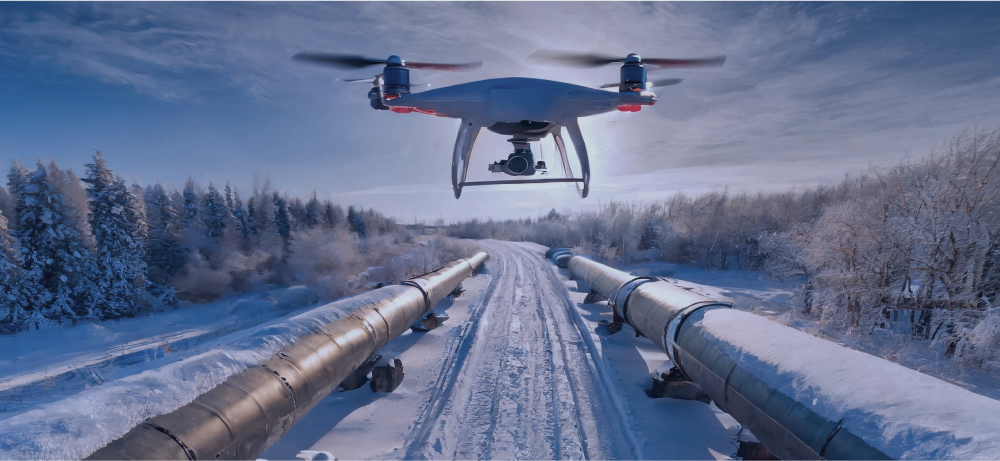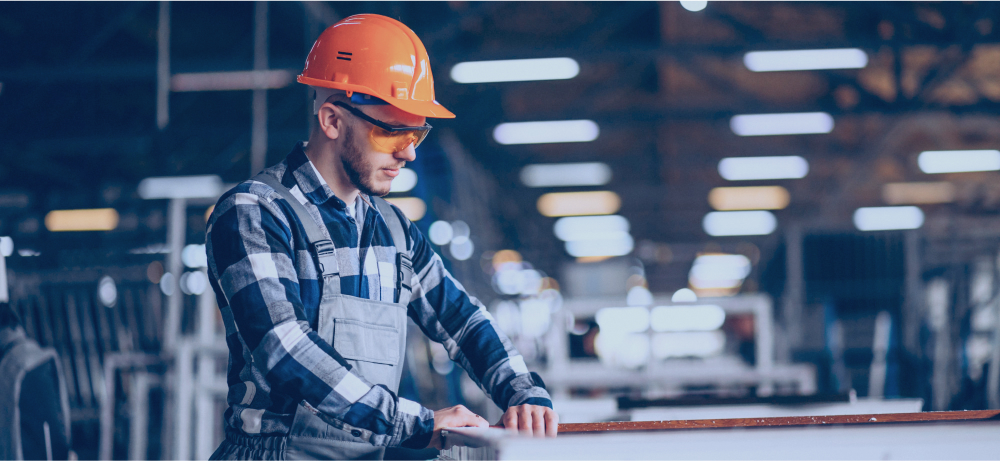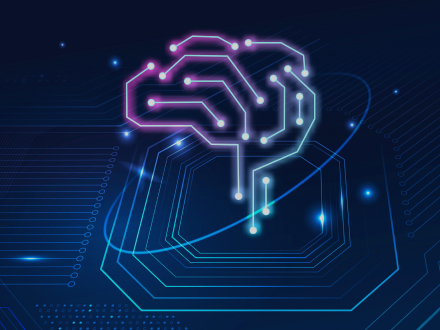Your message has been sent.
We’ll process your request and contact you back as soon as possible.
The form has been successfully submitted.
Please find further information in your mailbox.


Are delays and inefficiencies impeding your construction project? As indicated by the report from Research and Markets, the global construction industry is projected to hit $12.9 trillion by 2028, demonstrating a consistent Compound Annual Growth Rate (CAGR) of 4.4% from 2023 to 2028. This emphasizes the need to address productivity issues to keep up this growth and meet increasing demands.
On construction sites, where chaotic task coordination and unpredictable heavy machinery operation happen (let’s face it), IoT is not just an option — it’s a must. This includes machinery autonomously signaling maintenance needs, drones providing live site mapping, and wearable devices monitoring worker safety.
What was once a vision of the future is now a tangible reality, modifying construction site operations with heightened performance and safety measures.
The Internet of Things in construction refers to integrating interconnected devices, sensors, and equipment on construction sites to gather and exchange data. These devices can include everything from machinery and tools to wearables and drones.
Through combining data from different sources, IoT allows monitoring equipment performance instantly, spot maintenance issues early, and improve workflows. IoT-driven solutions strengthen safety by continuously controlling environmental conditions and workers’ health, thereby minimizing potential risks. Last but certainly not least, IoT helps manage resources better, save money, and keep projects on schedule and within budget while meeting quality standards.
“With IoT in construction, we can help by monitoring machinery performance, tracking material use as it happens, and spotting problems before they get out of hand. This means less costly downtime and smoother project progress. In the end, we guarantee our clients get projects done more efficiently, save money, and achieve the best results.”

Nazarevich Dmitry
CTO at Innowise
Imagine having sensors embedded in machinery and tools that continuously stream data about their condition and usage. The system can alert you to any irregularities, prevent unexpected failures, and optimize resource allocation — driving down costs.

One of the coolest features of IoT in construction is predictive maintenance. Instead of waiting for something to break down, advanced IoT systems continuously analyze data from your equipment to accurately predict when maintenance is needed.

IoT can monitor workers' health alertness and working conditions to avoid fatigue and minimize the risk of accidents. Moreover, an IoT-equipped office can reduce the number of cases when an employee isn't at work by delivering insights into working conditions and health factors.

Ongoing data output from sensors allows teams to monitor equipment energy usage and spot ways to cut down on waste. IoT also helps integrate renewable energy sources, like solar panels and automates tasks such as adjusting lighting and powering down unused machinery.

These sites become data hubs, with sensors and devices constantly feeding live-time information about everything from how machines are running to workers’ conditions. At the heart of it all, smart construction sites operate as complex ecosystems, where the interplay of interconnected data drives precision and efficiency.

Imagine having sensors embedded in machinery and tools that continuously stream data about their condition and usage. The system can alert you to any irregularities, prevent unexpected failures, and optimize resource allocation — driving down costs.

One of the coolest features of IoT in construction is predictive maintenance. Instead of waiting for something to break down, advanced IoT systems continuously analyze data from your equipment to accurately predict when maintenance is needed.

IoT can monitor workers' health alertness and working conditions to avoid fatigue and minimize the risk of accidents. Moreover, an IoT-equipped office can reduce the number of cases when an employee isn't at work by delivering insights into working conditions and health factors.

Ongoing data output from sensors allows teams to monitor equipment energy usage and spot ways to cut down on waste. IoT also helps integrate renewable energy sources, like solar panels and automates tasks such as adjusting lighting and powering down unused machinery.

These sites become data hubs, with sensors and devices constantly feeding live-time information about everything from how machines are running to workers’ conditions. At the heart of it all, smart construction sites operate as complex ecosystems, where the interplay of interconnected data drives precision and efficiency.

Komatsu is a major player in the construction and mining equipment world, known for pushing the envelope with cutting-edge technology to make job sites more efficient and productive.
Komatsu’s Smart Construction Edge is a breakthrough in drone surveying. This device converts drone flights into detailed point clouds for precise digital maps of construction sites. Partnering with Sony and NTT Communications, the latest Edge version uses AI to automatically remove obstacles, speeding up the process and providing accurate 3D maps for progress tracking and volume measurement on the Smart Construction Dashboard.
This rollout really proves how Komatsu’s innovation is making a big splash. Their new tech is revolutionizing drone surveying, making construction sites more productive and safer than ever.

Turner’s Innovation Department teamed up with Versatile, the top construction technology start-up, to improve crane efficiency using IoT and AI.
Versatile’s CraneView™ system, equipped with an IoT sensor mounted on the crane hook, captures and analyzes data on material flow, production rates, and crane utilization. A camera records crane activity, providing live feeds and lift sequences for review. AI technology classifies items, measures weights, and tracks lift cycles, offering detailed insights through an online and mobile dashboard.
This data improves construction planning and scheduling, increases productivity, and enhances safety by identifying and correcting unsafe behaviors among site workers.

Start implementing IoT just today.
The combination of IoT, AI, and machine learning turns mountains of data into early warnings for potential issues while optimizing resource use and making projects smoother than ever. For instance, AI-driven drones and cameras are used on construction sites to capture real-time images and videos. AI analyzes this data to track progress, detect safety hazards, and generate immediate alerts for issues. And it’s just getting started — these advancements are ramping up, promising even smarter and more efficient construction sites in the near future.
These dynamic models provide a complex view of a construction project, allowing for live monitoring of conditions and performance. As sensors collect data on structural integrity, temperature, and humidity, the digital twin updates to reflect these changes, providing an up-to-date site representation. This constant flow of data enables detailed simulations of construction processes, helping teams to test scenarios and optimize plans before actual implementation.
5G connectivity transfers data from IoT sensors, drones, and cameras with minimal latency. 5G facilitates the precise remote control of autonomous machinery, such as excavation robots, and supports advanced AR and VR tools for in-depth design evaluations and on-site assessments. Additionally, it takes team collaboration to the next level with high-quality video conferencing and uninterrupted communication across different locations.
Adopting IoT environmental monitoring solutions tailored to construction sites provides live-time data on dust, noise, and vibration levels. These solutions are modular, portable, and customizable to specific project requirements. IoT devices can detect instances where machines are consuming fuel while idle or operators are using more fuel than usual, allowing corrective action to be taken. Sensor data can also adjust on-site lighting levels during after-hours, saving energy.
Drones paired with IoT technology are set to become a big hit in construction. They’re transforming how we monitor sites by providing real-time data and detailed imagery, all sent straight to IoT systems. This tech helps teams stay on top of progress, quickly address issues, and make smarter decisions. As more construction projects look to streamline operations and boost efficiency, these drones are definitely going to gain popularity and become an essential tool on job sites.
From boosting worker safety with wearable devices to optimizing site operations with smart sensors, the impact of IoT in construction is not just on the horizon — they’re happening right now. If you’re not jumping on board with IoT solutions, you’re missing out on a chance to make your operations more efficient, cost-saving, and sustainable.
IoT monitors sites in real-time, tracks equipment, and rationally manages resources like energy and water. Sensors and cameras help oversee progress and worker productivity, while drones provide aerial views for planning. IoT also predicts maintenance needs, reducing downtime and costs. Overall, it’s making construction safer, cost-effective, and more sustainable.
The cost-saving impact of IoT on construction is anchored in sensors, which collect real-time data on various elements. These devices enable predictive maintenance, environmental monitoring, and tracking machinery, tools, and materials to minimize downtime and prevent theft. They forecast maintenance needs, reduce sudden breakdowns, and maximize productivity to save resource use and damage costs.
IoT devices generate extensive data that should be securely transmitted, stored, and analyzed. Measures such as end-to-end encryption, strong authentication, and regular firmware updates are obligatory to protect against vulnerabilities and unauthorized access. By tackling these challenges, the construction industry can make the most of connected technologies while keeping data safe.
Construction sites can have a big impact on their surroundings, but IoT environmental monitoring systems provide a smart way to reduce these effects. Live sensors can measure distinct ecological parameters like air quality, noise levels, and dust particles, providing valuable data for managing environmental impact. With this technology applied, construction sites follow regulations and support sustainable practices.
The market size for IoT in construction is projected to reach USD 33.04 billion by 2030. These insights suggest a promising trajectory for the industry, driven by advancements in IoT technology and increasing demand for digital solutions in construction practices.












Your message has been sent.
We’ll process your request and contact you back as soon as possible.

By signing up you agree to our Privacy Policy, including the use of cookies and transfer of your personal information.